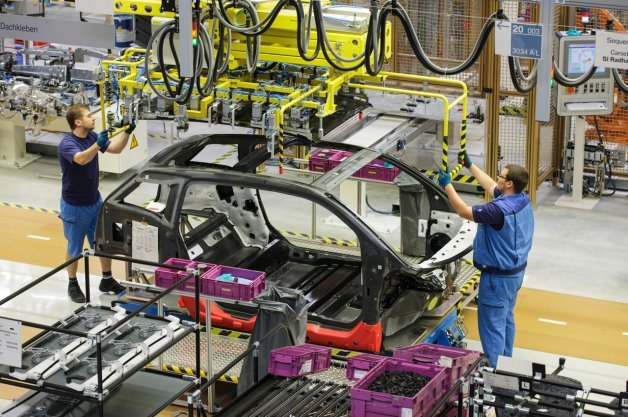Automakers Stuck on Structural Adhesives for New Cars

With increasing regulation forcing automakers worldwide to find ways to reduce emissions and boost mileage while simultaneously improving crash-test results, the challenge of shaving off mass while adding strength is one of the toughest challenges facing the industry. One way that automakers are finding ways to cut the fat includes replacing old-fashioned bolts, screws and even welds in favor of structural adhesives.
The average vehicle today uses 27 pounds of these bonding agents, which is up nearly 10 pounds in as many years, according to The Wall Street Journal. In all likelihood, that figure is only poised to grow. According to the report, global demand for the bonding agents is accelerating at about four to five percent annually.
Perhaps the biggest benefit of the adhesives is that they allow automakers to mix and match structural materials to make their vehicles light and strong. Various types of aluminum, steel, carbon fiber can all get combined together to take advantage of each of their strengths. However, this medley can't just be welded together in many cases. Instead, bonding agents come into play to fasten them all together. The 2015 Ford F-150, for example, with its significant amount of aluminum panels uses three times more structural adhesive than the current model, notes the WSJ.
These bonding agents have other potential advantages as well. BMW, for its part, claims that they can make repairs cheaper for the carbon fiber reinforced plastic on its i3 city car (pictured above). The car's passenger cell is made from over 30 components, and if one is damaged, it can often be cut out and a replacement glued in.
According to the report, the next frontier is using adhesives to hold together engine components. Because of the extreme heat and oily environment, bonding parts together there is difficult, but given the industry's dogged pursuit of weight savings, it's likely we'll see someone crack the code eventually.
Related News


